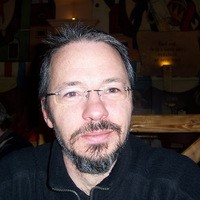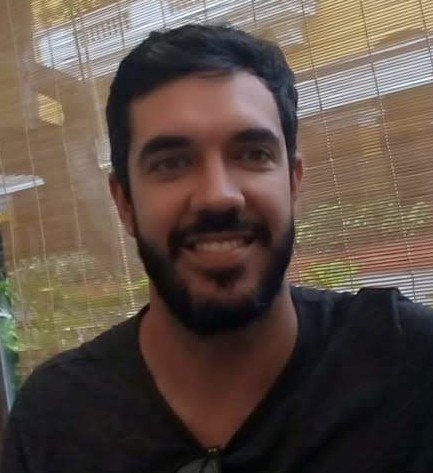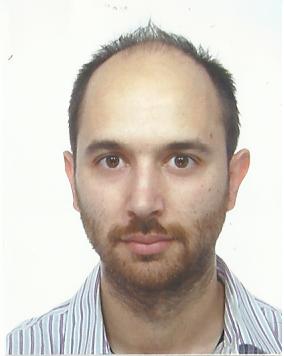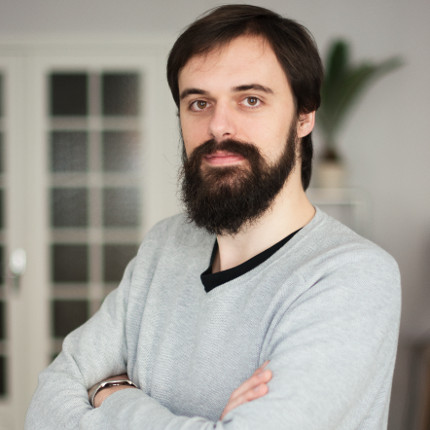
REVEAL (REVuE des progrAmmes du List) lance une série de séminaires ouverts à toutes et à tous. Ces rendez-vous réguliers vous permettront d’échanger avec les équipes du CEA-List sur différentes thématiques. Rendez-vous le 22 mars prochain pour le séminaire « Towards low-code, collaborative platforms for autonomous systems » organisé par Sébastien Gérard et Marcos Didonet de 09h30 à 12h30 en ligne sur livestorm.
Il sera diffusé via le lien suivant :
Keywords: AI, MBSE, collaborative modelling, autonomous systems, self learning robots, Papyrus4Robotics
Mots clés: IA, MBSE, modélisation collaborative, systèmes autonomes, robots auto apprenants, Papyrus4Robotics
Agenda du séminaire
Retrouvez le détail des présentations ci-dessous :
Title: Don’t Panic! – The role of Model-Driven Software Engineering in the era of AI
Abstract: We live in wonderful times. Every day, new AI tools promise to disrupt all aspects of our life, including software development. In this talk, I’ll argue that as model-driven experts, these are, in fact, excellent news for us. For several reasons. First, this AI revolution is adding to the increasing demand of new software solutions, especially systems that embed intelligent components as part of its core set of features both in the front-end (e.g. conversational user interfaces) and back-end (e.g. prediction services). This combination is usually referred to as AI-enhanced software or, simply, smart software. The only way to tame the essential and accidental complexity of smart software is by relying on model-based solutions. Secondly, AI components are software as well. And our modeling techniques will be beneficial to the specification, generation and maintenance of AI components, offering new opportunities for the validation and impact of our expertise. Finally, some of these new AI techniques can also help us to do our job better by assisting (not replacing!) us in our daily model-driven activities. AI is here to stay, it’s our job to explore how to best understand the opportunities this brings to the MBSE community. I hope this talk will be a good starting point for this discussion!
Presenter Bio:
Jordi Cabot is the head of the Software Engineering RDI Unit at the Luxembourg Institute of Science and Technology. Previously, he was a former ICREA Research Professor at Internet Interdisciplinary Institute, a Visiting Professor at the Western Norway University of Applied Sciences, an Associate Professor at École des Mines de Nantes (France) on an Inria international chair, a post-doctoral fellow at the University of Toronto, a senior lecturer at UOC and a visiting scholar at the Politecnico di Milano. He received the BSc and PhD degrees in Computer Science from the Technical University of Catalonia. Current research topics include software and systems modeling, pragmatic formal verification techniques, analysis of open source and open data communities and the role AI and natural language interfaces can play in software development (and vice versa). He has published over 200 articles in top conferences and journals in these areas. Apart from his scientific publications, he writes and blogs about all these topics in several blogs such as the Modeling Languages portal (http://modeling-languages.com). He is a member of the IEEE and the ACM.
Title: Generative tasks in MBSE design
Abstract:
The modeling task is often collaborative and it is part of a flow of non-isolated tasks. A model can be created by different means. For instance, a manually created model can be enriched by automatic semantic parsing of user comments. The created model can be used for different scenarios, such as code generation. In this presentation, we focus on two tasks related to code production: semantic analysis of hand written text for code generation and code generation based on an input model. The core concepts and prototypes will be presented.
Presenter Bio:

Gaël de Chalendar (PhD), is a researcher in the Text and Image Semantic Analysis Laboratory (LASTI) of the CEA-List institute. Gaël got his PhD in computer science in 2001 from University of Paris Sud. From 2001 to 2002, Gaël was Temporary Lecturer and Research Assistant at Orsay University (FR) where he taught computer science and natural language processing. Gaël is one of the main contributors to LIMA, a Multilingual Analyzer developed in LIST institute, and available as a free software under the MIT license. He has conceived a part of the architecture and is its current maintainer. He is also an important contributor to laboratory’s search engine. Gaël managed the French ANR RNTL Platform WebContent project. He also manages several projects with industrial partners. His research interests include semantic analysis, automatic summarization and, recently, generation with work on conversational assistants and code generation. He has supervised three PhD students and numerous trainees.
Title: Collaborative web modeling
Abstract:
Creating models in collaboration is often difficult because it involves the synchronization of several points of views. A web-based modeling framework would enable such kind of modeling. The framework would be flexible enough so new services could be added. to assist and/or automate the modeling tasks. In this presentation, we describe how the deployment of the service-based web architecture of PapyrusWeb will enable collaborative modeling, as well as the integration with model manipulation services as RCP applications. The existing architecture is constantly evolving towards being a (partial) autonomous system for software design.
Presenter bio:

Marcos Didonet Del Fabro is a Research Engineer at CEA, DILS/LSEA since March 2022. He participates in the DeepLab project in the development and research of activities related to PapyrusWeb, with main focus on integrating existing modeling services and that intends to provide new intelligent functionalities to help software developers. He has been Associate Professor at Departamento de Informatica, Universidade Federal do Paraná, Curitiba, Brasil, doing research/development and teaching in the field of Open Data integration and intelligent Model Driven Engineering. He has worked as a researcher/software engineer at IBM Software Group (France) , after doing an industrial postdoc at ILOG, in collaboration with INRIA labs. The goal was to apply MDE techniques to industrial applications. He obtained his Phd in 2007 at the University of Nantes, under the supervision of Jean Bézivin and Patrick Valduriez, at the INRIA/ATLAS team.
Title: Developing ROS 2 based robotics software systems with Papyrus for Robotics
Abstract:
ROS 2 is the de-facto standard open-source software platform used in industry and research for the development of advanced robotics applications. Papyrus for Robotics (https://www.eclipse.org/papyrus/components/robotics/) is an open-source, Eclipse-based, low-code environment that supports code generation for and reverse engineering of ROS 2 based software systems. It conforms to the H2020 RobMoSys principles, that contribute to a multiple stakeholders robotics business ecosystem towards an “EU Digital Industrial Platform for Robotics”. RobMoSys identifies roles in the robotic software development process, then defines abstractions and interfaces between the various roles as models that can be processed to create and maintain robotics applications on top of code-centric platforms. In the current practice, roboticists integrate advanced functions like navigation, manipulation and vision using manual programming, which is tedious, error prone and implies maintenance efforts. In this talk we show how Papyrus for Robotics (and the RobMoSys approach it conforms to) simplifies the development of ROS 2 applications. We then point out its current limitations and we introduce the current developments towards supporting in a low-code approach the design, deployment and re-configuration of software stacks bringing situation understanding and deliberation capabilities to future intelligent robots.
Presenters Bio:


Doctor in Computer Science (Emerging Digital Technologies, focus on Embedded Systems) from the Scuola Superiore Sant’Anna in Pisa, Italy, Matteo Morelli is a research engineer and project manager in the LSEA laboratory of DILS. His research focuses on the definition of tool-assisted design processes for the development, analysis and deployment of robotic software system architectures and on the integration of planning and machine learning techniques with behavior tree-based action policies. Matteo is a member of the topic group « Software Engineering, System Integration, System Engineering » (euRobotics AISBL TG) and of French research working group « GT4 : Architectures de contrôle pour la robotique » (GdR Robotique). Since September 2022, Matteo is CEA Expert in « Model-Based Engineering of autonomous software systems architectures ».
Raphaël Lallement is a Doctor in Artificial Intelligence for Robotics, specialised in symbolic task planning. He is a research engineer in the LSEA laboratory at CEA LIST and focuses on robotics architecture and deliberation layers. The goal is to increase the autonomy of embedded systems, with a strong focus on safety. He brings his expertise on automated task planning to allow smart decisions in robots, leveraging the power of combined task and motion planning to find the next actions to perform, while ensuring applicability and efficiency. He is part of the Confiance.ai program to study the use of Assurance Cases to demonstrate the safety of systems. Before CEA, he has had experience in academic research, foundation of a startup on general AI and project management in industry on large scale drone systems.